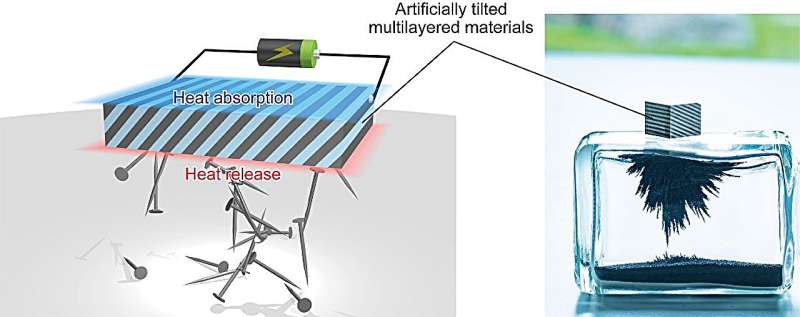This article has been reviewed according to Science X's editorial process and policies. Editors have highlighted the following attributes while ensuring the content's credibility:
fact-checked
peer-reviewed publication
trusted source
proofread
Thermoelectric permanent magnet opens new possibilities in thermal management technologies

A research team has demonstrated that the transverse thermoelectric conversion (i.e., energy conversion between charge and heat currents that flow orthogonally to each other) can be greatly enhanced by applying magnetic fields or utilizing magnetism.
In addition, the team developed a thermoelectric permanent magnet—a new functional material capable of thermoelectric cooling and power generation—by combining permanent magnets and thermoelectric materials into a hybrid structure. These results may serve as a guide in achieving thermal management and energy harvesting using common magnets.
The Seebeck effect and the Peltier effect have been extensively researched for their application to thermoelectric conversion (TEC) technologies. These effects are classified as longitudinal TEC phenomena—conversion between charge and heat currents that flow in parallel to each other.
Although longitudinal TEC devices have higher energy conversion efficiency than their transverse counterparts, their structures are more complex. By contrast, structurally simpler transverse TEC devices can have low energy losses, low manufacturing cost, and excellent durability.
To achieve the practical use of transverse TEC devices, however, their conversion efficiency needs to be improved. Transverse TEC is driven by different types of physical phenomena: magnetically induced phenomena (i.e., the magneto-thermoelectric effect) and phenomena attributed to anisotropic crystalline or electronic structures. These phenomena had previously only been researched independently of one another.
This National Institute for Materials Science (NIMS) research team recently fabricated an artificially tilted multilayered material—a hybrid material capable of simultaneously exhibiting three different types of TEC phenomena, including the magneto-thermoelectric effects. The team then demonstrated the enhanced cooling performance of this material due to the transverse TEC.
The hybrid material was created by alternately stacking and bonding Bi88Sb12 alloy slabs, which exhibit large magneto-thermoelectric effects, and Bi0.2Sb1.8Te3 alloy slabs, which exhibit a large Peltier effect.
This stack was then cut diagonally to form the artificially tiled multilayered material. When magnetic fields were applied to this material, its transverse TEC efficiency increased, which was found to be attributed to the combined effects of the three types of TEC phenomena.
The team then replaced the Bi0.2Sb1.8Te3 alloy slabs with permanent magnets and found that the transverse TEC performance can be improved by the magneto-thermoelectric effects even without external magnetic fields.
This research demonstrated how magnetic materials can be designed to increase their thermoelectric cooling and power generation capabilities. The team will develop materials/devices with better thermal management and energy harvesting capabilities for a sustainable society and improved IoT systems in future research.
This research is published in the journal Advanced Energy Materials.
More information: Ken‐ichi Uchida et al, Hybrid Transverse Magneto‐Thermoelectric Cooling in Artificially Tilted Multilayers, Advanced Energy Materials (2023). DOI: 10.1002/aenm.202302375
Journal information: Advanced Energy Materials
Provided by National Institute for Materials Science




















